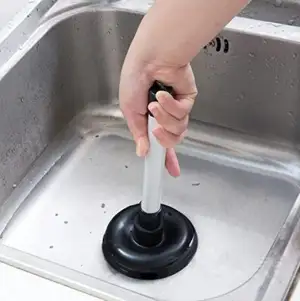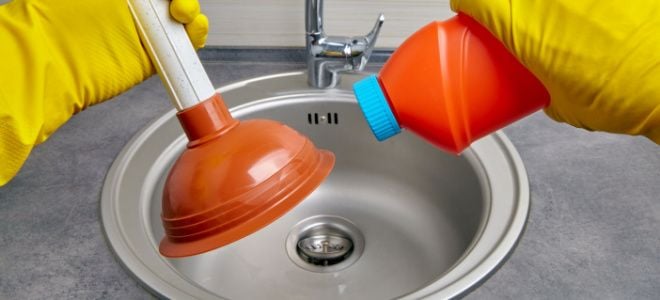Ways to Effectively Apply Plungers and Drain Cleaner: Pro Tips
Ways to Effectively Apply Plungers and Drain Cleaner: Pro Tips
Blog Article
Do you find yourself in search of resources concerning How to Unclog Your Sink with a Plunger?

Introduction
Correct maintenance of house drains is necessary for preventing blockages and making certain smooth water flow. One of the secret devices in every homeowner's toolkit is the plunger, together with different drainpipe cleansers made to tackle stubborn clogs efficiently. This short article checks out exactly how to utilize plungers and drain cleaners efficiently to keep your drains pipes moving openly.
Area 1: Comprehending Plungers
Types of Plungers
There are several sorts of bettors offered, each designed for various kinds of drains and clogs. One of the most typical types consist of cup bettors, flange plungers, and accordion plungers.
Just How Plungers Work
Bettors work with the principle of producing stress and suction to displace blockages. When appropriately used over a drainpipe, they develop a vacuum cleaner that can pull out particles or separate clogs.
Selecting the Right Bettor
Choosing the appropriate plunger depends upon the sort of drain and the nature of the blockage. Mug bettors are optimal for sinks and bathtubs, while flange plungers are better fit for bathrooms as a result of their layout.
Common Blunders with Bettors
Staying clear of these mistakes ensures effective plunging: incorrect seal around the drain, inadequate pressure, and not clearing bordering particles.
Section 2: Making Use Of Plungers Properly
Preparation
Prior to plunging, make certain the bettor covers the drain totally and develops a limited seal. Clear any visible particles around the drainpipe opening.
Method
Start with gentle diving activities to develop suction. Boost stress slowly, using a consistent rhythm. Repeat as essential until the drain clears.
Repairing Tips
If plunging doesn't work, attempt adjusting the seal, using oil jelly for a better seal, or using a different kind of bettor.
Area 3: Understanding Drain Cleaning Company
Kinds Of Drainpipe Cleaners
Drain cleansers can be chemical or chemical. Chemical cleansers utilize strong chemicals to dissolve obstructions, while enzymatic cleansers use natural enzymes to break down raw material.
How Drain Cleaning Company Job
Chemical cleaners react with blockages to dissolve them, while chemical cleaners break down natural materials like hair and oil without harming pipes.
Security Factors to consider
Always put on gloves and eye protection when making use of chemical drainpipe cleaners. Make certain appropriate air flow and adhere to supplier instructions thoroughly.
Eco-Friendly Alternatives
Take into consideration utilizing vinegar and cooking soft drink or enzyme-based cleansers for environment-friendly options that are more secure for pipes and the setting.
Section 4: Making Use Of Drain Cleaning Company Successfully
Application Techniques
Pour chemical cleansers directly right into the drainpipe opening. Allow them to help the advised time before purging with warm water. Chemical cleaners need to sit overnight.
Preventative measures
Avoid mixing different kinds of cleansers, as this can generate toxic fumes. Never use chemical cleaners combined with a plunger, as splashing can occur.
Dealing With Stubborn Clogs
For persistent clogs, consider using a plumbing serpent or calling a specialist plumbing professional to stop damages to pipes.
Conclusion
In conclusion, recognizing exactly how to utilize plungers and drainpipe cleaners effectively is essential for keeping healthy plumbing systems. By selecting the right tools and strategies, house owners can tackle small clogs and stop major plumbing concerns down the line.
How to Use a Plunger to Unclog a Drain
The humble plunger is a simple yet effective tool for breaking clogs in sinks, tubs and toilets. This handy tool is easy to use. You can make the most of its power if you understand how it works. Ready to dive in? Here’s what you need to know.
Safety First!
Never use a plunger with drain chemicals. Water will splash as you work, and the chemicals can spatter, burning skin and eyes. It’s a good idea to use rubber gloves and wear safety goggles when you work on a clog.
Choose the Right Tool for the Job
Plungers come in two different styles. Sinks, bathtubs and showers require a cup plunger. Like its name suggests, the rubber end is shaped like a cup. Use a flange plunger on toilets. These plungers have a rubber funnel extending from the cup. A plunger needs to be big enough to cover the drain.
Ready, Set, Plunge!
Coat the rim: Coat the plunger rim with petroleum jelly. This helps make a better seal.
Block outlets: Hold a wet rag over nearby outlets such as the overflow vent or the drain in a second sink.
Release air: Insert the plunger at an angle into the water. Water will displace air in the cup. A water-filled cup is more forceful than one filled with air.
Keep the plunger upright: Hold the plunger perpendicular to the drain. Use fast, forceful strokes, but make the first stroke gentle. The first stroke can create a splash if the cup still contains air. Thrust the plunger 15 to 20 times.
Snap off the plunger: The final stroke should be a strong upward motion that ends when the plunger snaps off the drain.
Repeat the process: you may need to repeat this sequence several times. When the water drains away, your work is done. High-five! https://plumbernw.com/blog/how-to-use-a-plunger-to-unclog-a-drain/

Application Techniques
Pour chemical cleansers directly right into the drainpipe opening. Allow them to help the advised time before purging with warm water. Chemical cleaners need to sit overnight.
Preventative measures
Avoid mixing different kinds of cleansers, as this can generate toxic fumes. Never use chemical cleaners combined with a plunger, as splashing can occur.
Dealing With Stubborn Clogs
For persistent clogs, consider using a plumbing serpent or calling a specialist plumbing professional to stop damages to pipes.
Conclusion
In conclusion, recognizing exactly how to utilize plungers and drainpipe cleaners effectively is essential for keeping healthy plumbing systems. By selecting the right tools and strategies, house owners can tackle small clogs and stop major plumbing concerns down the line.
How to Use a Plunger to Unclog a Drain
The humble plunger is a simple yet effective tool for breaking clogs in sinks, tubs and toilets. This handy tool is easy to use. You can make the most of its power if you understand how it works. Ready to dive in? Here’s what you need to know.
Safety First!
Never use a plunger with drain chemicals. Water will splash as you work, and the chemicals can spatter, burning skin and eyes. It’s a good idea to use rubber gloves and wear safety goggles when you work on a clog.
Choose the Right Tool for the Job
Plungers come in two different styles. Sinks, bathtubs and showers require a cup plunger. Like its name suggests, the rubber end is shaped like a cup. Use a flange plunger on toilets. These plungers have a rubber funnel extending from the cup. A plunger needs to be big enough to cover the drain.
Ready, Set, Plunge!
Coat the rim: Coat the plunger rim with petroleum jelly. This helps make a better seal. Block outlets: Hold a wet rag over nearby outlets such as the overflow vent or the drain in a second sink. Release air: Insert the plunger at an angle into the water. Water will displace air in the cup. A water-filled cup is more forceful than one filled with air. Keep the plunger upright: Hold the plunger perpendicular to the drain. Use fast, forceful strokes, but make the first stroke gentle. The first stroke can create a splash if the cup still contains air. Thrust the plunger 15 to 20 times. Snap off the plunger: The final stroke should be a strong upward motion that ends when the plunger snaps off the drain. Repeat the process: you may need to repeat this sequence several times. When the water drains away, your work is done. High-five! https://plumbernw.com/blog/how-to-use-a-plunger-to-unclog-a-drain/

Hopefully you liked our piece about . Thank you for taking a few minutes to read our article. Do you know about somebody else who is very much interested in the subject? Take a moment to promote it. We truly appreciate reading our article about Tips on How to Effectively Use a Plunger.
Get Estimate Report this page